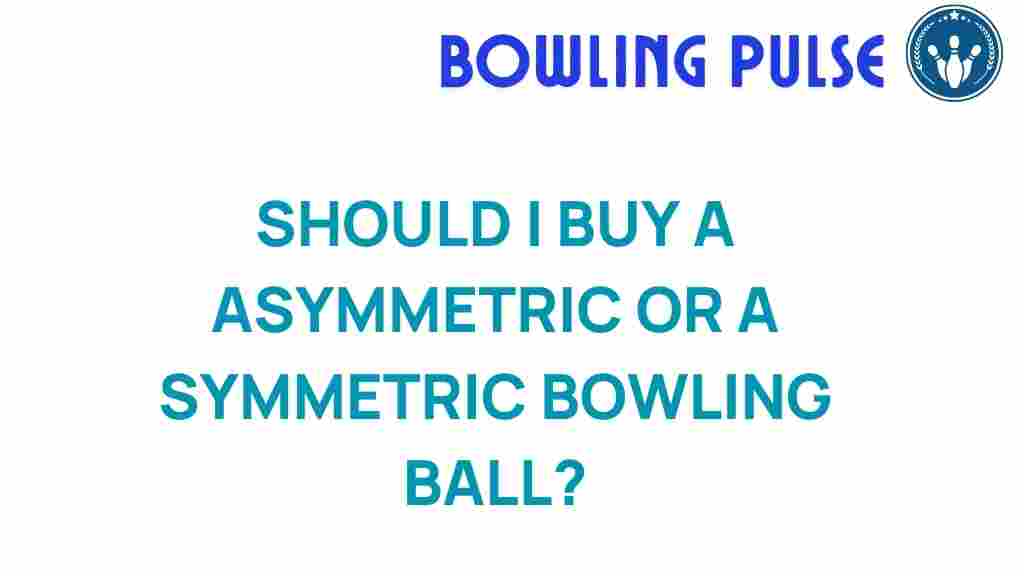Asymmetric vs. Symmetric Bowling Balls: Which Should You Choose?
When it comes to selecting the right bowling equipment, one of the most crucial decisions you will face is whether to opt for asymmetric bowling balls or symmetric bowling balls. Each type of ball has its unique characteristics, advantages, and disadvantages that can affect your overall performance on the lanes. In this article, we will delve into the performance comparison between these two types of bowling balls, exploring their dynamics, how they interact with different bowling styles, and providing you with essential bowling tips to help you make an informed decision.
Understanding the Basics of Bowling Ball Dynamics
Before we dive into the comparison, it is essential to understand the fundamental differences in the dynamics of asymmetric and symmetric bowling balls. The shape and distribution of weight within the ball play a significant role in how it behaves on the lane.
- Asymmetric Bowling Balls: These balls have an uneven weight distribution, creating a different center of gravity. This results in a more pronounced hook potential and can lead to a more aggressive movement down the lane.
- Symmetric Bowling Balls: These balls are designed with a uniform weight distribution, providing a more predictable and stable motion. They typically offer a smoother arc and are easier to control for straight shots.
Performance Comparison: Asymmetric vs. Symmetric
Now that we understand the basic dynamics of each type of ball, let’s compare their performance in various scenarios.
Hook Potential
One of the most significant aspects of performance is how much a ball hooks. Here’s how the two types stack up:
- Asymmetric Bowling Balls: Known for their strong hook potential, these balls can create a sharp turn towards the pins, especially when thrown with a higher rev rate. Bowlers looking to create a dramatic angle to the pocket often prefer these balls.
- Symmetric Bowling Balls: While they can hook, the motion is generally more gradual. This makes them suitable for bowlers who prefer a more controlled throw or those who play in conditions where the lanes are less oily.
Control and Consistency
Control is paramount in bowling, especially for spare conversion:
- Asymmetric Bowling Balls: They can be trickier to control due to their aggressive nature, which may lead to inconsistent shots for novice bowlers. However, advanced bowlers can harness this potential for more striking shots.
- Symmetric Bowling Balls: These balls offer a more consistent and reliable performance, making them ideal for beginners or bowlers focusing on spares. Their predictable motion allows for easier adjustments during gameplay.
Bowling Styles and Preferences
Your individual bowling style will significantly impact your choice between asymmetric and symmetric bowling balls. Here’s how different styles align with each type:
- Asymmetric Bowling Balls: Best suited for bowlers with high rev rates and a stronger throwing style. If you enjoy hooking the ball and playing angles, this type may enhance your performance.
- Symmetric Bowling Balls: Ideal for bowlers who favor straight shots or have a lower rev rate. If you focus on accuracy and spare conversions, these balls can provide the stability you need.
Choosing the Right Bowling Ball for Your Style
When selecting the right ball, consider the following factors:
- Lane Conditions: Analyze the oil patterns on the lanes you typically play. Asymmetric balls perform better on oily conditions, while symmetric balls are great for drier lanes.
- Your Skill Level: Beginners may find symmetric balls easier to use, while experienced bowlers can benefit from the aggressive nature of asymmetric balls.
- Personal Preference: Ultimately, try out both types and see which feels best in your hands and aligns with your style.
Bowling Tips for Maximizing Performance
To get the most out of your chosen bowling ball, follow these essential bowling tips:
- Practice Regularly: Consistent practice helps you understand how your ball reacts under different conditions.
- Adjust Your Release: Experiment with your grip and release to find the optimal technique for your ball type.
- Monitor Your Speed: The speed of your delivery impacts how the ball behaves. Adjust your speed according to the ball you are using.
- Focus on Spare Conversion: Use a symmetric ball for spares to maintain accuracy and consistency.
Troubleshooting Common Issues
Even with the right equipment, you may encounter challenges. Here are some troubleshooting tips:
- Inconsistent Hook: If your asymmetric ball isn’t hooking as expected, check your release angle and speed. You might also need to adjust the surface texture of the ball.
- Difficulty with Spares: If you struggle with spare conversions using an asymmetric ball, consider switching to a symmetric ball for those crucial shots.
- Tracking Issues: Ensure that your ball is drilled correctly for your hand position and style. Poor drilling can lead to tracking problems.
Conclusion
Choosing between asymmetric bowling balls and symmetric bowling balls ultimately comes down to understanding your personal style, skill level, and the lane conditions you frequently encounter. Each type has its advantages and is suited for different bowling techniques.
As you refine your skills and delve deeper into the game, you may find yourself switching between the two types depending on your needs. Remember to keep experimenting, practicing, and seeking advice from fellow bowlers or coaches to elevate your game.
For more information on selecting the right bowling equipment and improving your game, visit Bowling Tips Online.
Ready to enhance your bowling experience? Check out the latest gear and tips at Bowling Gear Reviews.
This article is in the category Equipment and created by BowlingPulse Team
